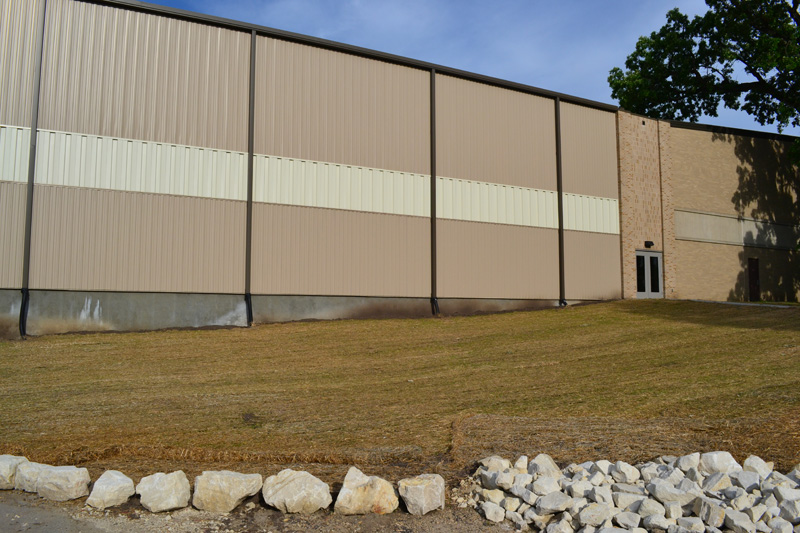Erosion control can be accomplished in a number of ways. With any installation of new seed or sod in your lawn, there is always a chance of erosion. Erosion control is needed more frequent in seeded lawns because seed is not near as heavy as sod and tends to wash away. Proper installation of both seed and sod will reduce the chances for erosion in your newly installed lawn. The best way to reduce the need for erosion control is to make sure that your lawn gets established as soon as possible. Roots from the new lawn will hold dirt in place and provide the most natural form of erosion control.
Erosion control in seeded and sodded lawns.
Seeded Lawns- The quicker that your seed establishes itself, the less chance of erosion that you have. Properly installing your seed by gilling or working it into the soil will help reduce seed run off. If your seed is gilled in to your lawn, the soil will act as a weight to hold the seed in place. Installing an erosion mat such as straw or fiber will greatly increase the success of your seeded lawn. These mats will slow down water flow over your lawn, which minimizes seed loss. The mats will also hold the dirt in place better, so that you do not have small valleys in your lawn. Erosion mat works better than hydro seed installations because it contains straw woven into netting which acts like a blanket. Straw matting is more expensive to install, but the success rate is higher. In some applications it might not be practical to install straw matting, so hydro seeding may be your only option. Hydro seeding is far more effective than just gilling in seed, because the product goes on wet and dries to the ground holding it in place.
Watering seeded lawns will decrease the erosion potential. Adequate, but not overwhelming amounts of water will help your seed germinate quicker. If your seed starts to root in faster, there is less opportunity for the seed to fail.
Sodded Lawns- Sodded lawns have a far less chance of erosion than seeded lawns. The biggest chance for erosion is when sod is installed on hills where it has a tendency to slide down the hill when wet. To minimize the sliding of sod on hills, make sure to install sod stakes. Sod stakes are similar to big staples that are about 4 inches long that hold the sod in place. If your sod is not watered adequately, it may shrink and cause small valleys between the pieces of sod. If this happens, these valleys may cause water to flow through them, increasing erosion on your lawn. It is always better to water your sod right away and on a regular basis to avoid these issues.

